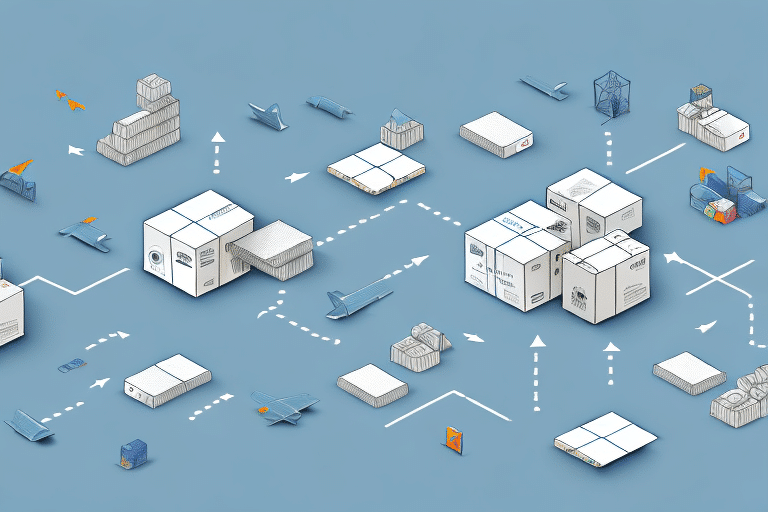Understanding Procurement and Logistics
Importance of Procurement and Logistics
Effective procurement and logistics management can significantly impact a business's bottom line. Procurement involves selecting suppliers, negotiating contracts, purchasing goods, and ensuring timely delivery. Logistics focuses on the efficient movement and storage of goods from initial shipment to final delivery. Together, these processes ensure that businesses have the necessary materials and resources at the right time and cost to meet operational goals.
Moreover, proficient procurement and logistics can contribute to a company’s sustainability efforts. By selecting suppliers with robust environmental and social practices, businesses can reduce their carbon footprint and promote ethical practices throughout their supply chain. Optimizing logistics operations leads to more efficient transportation and reduced waste, further supporting sustainability goals.
Common Challenges
Despite their importance, many businesses encounter challenges in optimizing procurement and logistics. Common issues include:
- Supplier Selection and Contract Negotiation: These can significantly affect the cost and quality of goods and services.
- Managing the Flow of Goods: Complexity arises when handling multiple shipments from various locations.
- Inventory Visibility: Inadequate tracking of inventory levels can lead to delays and excess costs.
- Global Supply Chain Challenges: Navigating different regulations, customs procedures, and cultural differences when sourcing internationally.
- Lack of Standardization: Disparate processes and systems across departments or locations can lead to inefficiencies and errors.
Strategies for Optimizing Procurement
Adopting Automation and Digitalization
Embracing automation and digital tools, such as e-procurement platforms, can streamline procurement processes, improve supplier management, and provide real-time visibility into procurement data. According to a Gartner report, businesses adopting automation technologies can reduce procurement costs by up to 20%.
Lean Procurement Practices
Implementing lean procurement focuses on minimizing waste, increasing efficiency, and enhancing supplier relationships. This approach involves continuous process improvement and the elimination of non-value-added activities.
Supplier Communication and Management
Establishing clear communication channels with suppliers ensures that business needs are understood and met efficiently. Implementing a supplier performance management system helps identify and address any issues, ensuring that suppliers meet business expectations.
Centralized Procurement Systems
Centralizing procurement processes across different departments and locations reduces duplication of efforts, improves visibility, and ensures consistent application of procurement policies and procedures throughout the organization.
Best Practices for Enhancing Logistics Efficiency
Data-Driven Approaches
Utilizing data analytics to track and analyze logistics operations can identify areas for improvement. According to a study by Supply Chain Management Review, data-driven logistics strategies can enhance efficiency by up to 15%.
Just-In-Time (JIT) Inventory
Implementing a JIT approach involves receiving goods exactly when they are needed and in the required quantities, thereby minimizing inventory levels and reducing associated storage costs.
Outsourcing to Third-Party Logistics Providers (3PLs)
Outsourcing logistics functions to specialized 3PLs allows businesses to leverage their expertise, advanced technologies, and global networks. This can lead to improved efficiency and cost savings.
Route Optimization
Optimizing transportation routes and schedules using advanced software can reduce transportation costs, improve delivery times, and minimize environmental impact. Tools like Geopointe provide real-time route optimization solutions.
Leveraging Technology in Supply Chain Management
E-Procurement Platforms
E-procurement platforms automate purchasing processes, enhance supplier collaboration, and provide comprehensive procurement analytics. Solutions like Oracle Procurement Cloud are widely adopted.
Transportation Management Systems (TMS)
TMS solutions facilitate the planning, execution, and optimization of transportation operations. They offer features such as route planning, load optimization, and real-time tracking. Transplace is an example of a leading TMS provider.
Warehouse Management Systems (WMS)
WMS optimize warehouse operations by managing inventory, streamlining order fulfillment, and improving space utilization. Systems like Mantradeware are instrumental in enhancing warehouse efficiency.
Real-Time Tracking Technologies
Implementing real-time tracking technologies, such as GPS and RFID, allows logistics managers to monitor shipments, anticipate delays, and make informed decisions. This level of visibility enhances control and reduces risks associated with transportation.
Outsourcing vs In-House Management of Procurement and Logistics
Benefits of Outsourcing
Outsourcing procurement and logistics functions provides access to specialized expertise, advanced technologies, and global networks. It allows businesses to focus on their core competencies and reduce costs associated with maintaining in-house teams. According to a Forbes article, companies can achieve up to a 30% reduction in logistics costs through outsourcing.
Advantages of In-House Management
Managing procurement and logistics in-house offers greater control over processes, flexibility in decision-making, and the ability to swiftly adapt to changing market conditions. It also fosters closer relationships with suppliers and customers, enhancing communication and collaboration.
Factors to Consider in Choosing
When deciding between outsourcing and in-house management, businesses should evaluate factors such as cost, control, expertise, scalability, and the strategic importance of procurement and logistics to their operations.
Measuring and Achieving Cost Savings
Key Performance Indicators (KPIs)
Establishing KPIs is essential for tracking and measuring procurement and logistics performance. Common KPIs include:
- Supplier Performance: Evaluates the reliability and quality of suppliers.
- Delivery Times: Measures the efficiency of the logistics process.
- Inventory Turnover: Assesses how quickly inventory is sold and replaced.
- Logistics Costs: Monitors the total cost associated with transportation and storage.
Cost-Saving Strategies
Implementing effective procurement and logistics strategies can lead to significant cost savings. These strategies include negotiating better contracts with suppliers, reducing inventory levels through JIT practices, streamlining logistics operations, and improving supply chain visibility.
Impact on Customer Satisfaction
Efficient procurement and logistics management ensures timely delivery of products and services, enhancing customer satisfaction and loyalty. Satisfied customers are more likely to make repeat purchases and recommend the business to others, contributing to increased sales and revenue.
Future Trends in Procurement and Logistics
Automation and Digitalization
The ongoing advancement of automation and digital tools continues to transform procurement and logistics. Technologies such as artificial intelligence (AI) and machine learning are increasingly used to predict demand, optimize routes, and enhance decision-making.
Advanced Analytics and Big Data
Leveraging big data and advanced analytics enables businesses to gain deeper insights into their supply chain operations. These insights facilitate more informed decision-making, risk management, and strategic planning.
Blockchain Technology
Blockchain offers enhanced transparency and security in supply chain transactions. By providing an immutable ledger of transactions, blockchain helps in tracking products, verifying authenticity, and reducing fraud.
Sustainability and Ethical Practices
An increased focus on sustainability and ethical practices is shaping the future of procurement and logistics. Businesses are prioritizing environmentally friendly practices, reducing carbon emissions, and ensuring ethical sourcing to meet consumer expectations and regulatory requirements.
Case Studies: Real-World Examples of Successful Procurement and Logistics Optimization
Examining real-world case studies provides valuable insights into effective procurement and logistics strategies. Notable examples include:
- Company A: Implemented an e-procurement platform, resulting in a 25% reduction in procurement cycle time.
- Company B: Adopted lean procurement practices, leading to a 15% decrease in procurement costs.
- Company C: Leveraged advanced logistics technologies to enhance delivery efficiency, improving customer satisfaction scores by 20%.
- Company D: Outsourced logistics functions to a 3PL provider, achieving a 30% reduction in logistics costs and expanding global reach.
These case studies demonstrate that by adopting best practices in procurement and logistics, businesses can achieve significant gains in efficiency, cost savings, and customer satisfaction.
In conclusion, optimizing procurement and logistics for maximum efficiency requires a comprehensive understanding of these processes, addressing common challenges, and implementing best practices and strategies. By leveraging technology, adopting lean practices, and continuously measuring performance using KPIs, businesses can enhance their procurement and logistics operations, ultimately gaining a competitive edge in their industries.






















